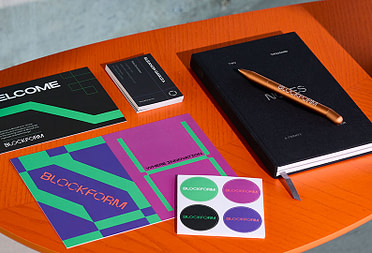5 tips for practical persuasion

When you run a business, every word you use can have an impact on how people see your brand – so how can you make sure they all build towards a positive perception? Here are 5 persuasive tips to help spur your success.
Businesses rely on persuading people. It’s how you get customers to understand, to buy and to believe in what you do. Whether you’re a freelancer, entrepreneur, or founder, the things you say about your brand need to be persuasive – and that goes for everything from product descriptions to email subject lines.
But the world of persuasion doesn’t need a PhD in behavioural psychology – it’s a skill that’s entirely attainable with practice. As Robert Cialdini, author of the infamous marketing psychology book Influence reminds us, “If a patsy like me can do it… anyone can”. Often, it comes down to the way you plan and write – so here are 5 tips to try next time you’re putting some words together.
1. Social Proof – “everyone else is doing it”
People do as crowds do and showing what someone’s peers are up to can be incredibly powerful. It’s all about the power of testimonial – if you’re on the fence about whether or not to do something and you see someone else who’s taken the plunge and been happy, it helps build your belief that if you follow the same path, you’ll get the same benefit. Research from Nielsen shows that 92% of people trust testimonials from people who they share characteristics with (same age, location, sector…). That’s pretty powerful stuff!
How to use it:
Get to know your customers and let them do the talking for you – include testimonials, case studies, and research on your website, on social media, and if you want a really personal touch, on postcards. Having other people talk about how great you are is never going to harm your prospects!
2. Listening – “tell me what I want to know – not what you want to tell me”
A lot of people do this backwards by instinct. When they have a message to get across, they pile in from all angles to make themselves understood. Use social media and any feedback you have to understand why your customers are using you – rather than why you think they’re using you.
This also comes across in the detail of the language that you use. Look again at the words you’re using – every time you say ‘we’, can you say ‘you’ instead? And do you really understand why someone would come to you over a competitor? Take the time to ask, listen and understand the real-world benefits you bring.
How to use it:
Speak in your customers’ language. Look again at the words you and they use. Are they the same? Instead of saying ‘we make the best products on the market’, how can you make it about your customer instead? Tell them what they’ll get – not who you are: ‘You’ll save time and money – our products last longer.’ Instead of saying ‘We’ve got 15 years’ experience photographing weddings’, try ‘You’re in safe hands – we have 15 years’ experience’.
3. Objection handling – ”what if it doesn’t work out?”
Many business professionals view the path to persuasion not as one of imposing ideas, but rather one of removing barriers or objections. Instead of telling someone to buy a cellphone, they show them that it’s not too expensive (try the a payment plan) and that they don’t have to worry about the device breaking (opt for an insurance plan).
Objections – or reasons why people don’t buy from you – usually fall into 4 buckets: price, quality, time, and effectiveness. If you can address the most common ones for your business in your marketing materials, you’ll help smooth the journey.
How to use it:
You might already be doing this one – it’s the kind of thing people tend to tackle in their FAQs. Returns policies, shipping costs, size and compatibility information are all the kinds of details that can help. If you’re in fashion, you might offer free returns so people can buy two sizes and return the one that doesn’t fit. Make jewellery? Give clear sizing guides to help reassure people that they’re making the right choice.
4. Outcome modeling: “what’s going to happen next?”
Think about this as telling someone what they’re going to get before you tell them what to do – this is the reason why someone will move forward in their buying process. Sometimes, it’s not always clear what will happen next, and the more you can help someone understand exactly what the next steps are in a chain, the more likely they are to follow it. Think of it as letting your customers see through a door before they have to open it.
How to use it:
Don’t give empty instructions, instead try and always say what someone will get by following that instruction – if you’re using language like ‘click here’ or ‘sign up’ you’re going down the wrong path. Those are the actions someone will take in order to get the thing they’re after – so lead on that. Try ‘find your size’ or ‘join our group’.
5. Scarcity – “it won’t be around forever!”
By making something scarce, you can give a sense of urgency, which in turn can make something seem more desirable, leading to faster action. That’s why you often see the text “only 2 items left” in red when shopping online, a countdown timer when buying show tickets, and according to the Harvard Business Review, why McDonalds repeatedly launches the McRib sandwich for just a limited time only. When people think that the opportunity might pass, they’re less likely to put it off.
How to use it:
If your products are limited edition, make it clear on your product pages. Put expiration dates on your offers, and If you don’t currently make it obvious that your products are in limited supply, do so.
Want more tips to boost your business? Try our guide to productivity
Keep in touch
Get design inspiration, business tips and special offers straight to your inbox with our MOOsletter, out every two weeks.



